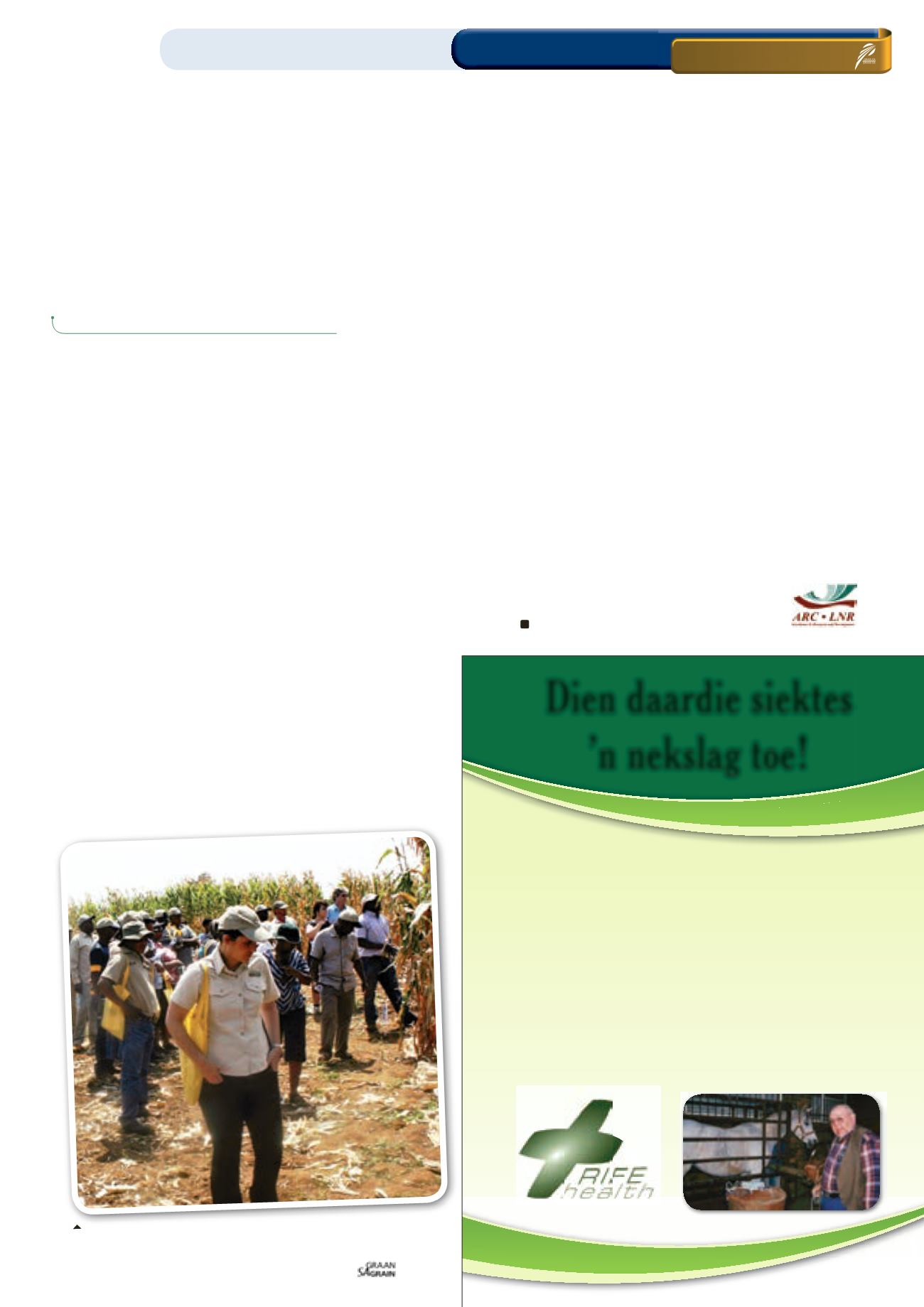
D
it is al in die 1930’s wetenskaplik bewys dat kieme en kankerselle
deur resonansiegolwe vernietig kanword en dit kan virmens en dier
aangewendword.
Met die spesiale antenna-mat word die instrument byvoorbeeld op ’n koei
wat mastitis het se rug gedrapeer.Varkprodusente gebruik dit met groot
sukses in varkhokke om die mortaliteit van klein varkies dramaties te ver-
minder.Dit is uitstekend om perdesiekte te beheer.
’nGewone resonator (soos opdie foto)met ’n ingeboude battery kos slegs
R6 100.Hierdie instrument betaal homself binne ’n paarmaande.
Besoek die volgendewebwerwe virmeer inligting:
en
of skakel Gerrie Smit van RifeHealth by 082 880 7637.
www.
infowo
rks
iz
.b
Dien daardie siektes
’nnekslag toe!
Drought TEGO:
Next-generationmaize
hybrids safeguarding yieldagainst
erraticSA climatic conditions
E
rratic climatic conditions associated with global warming,
such as recurrent droughts, are major prevalent abiotic
stress factorsand thegreatest sourcesofuncertainty limiting
maize productivity. Up to 96% of our country’s farms could
benegatively affectedby climate change inSouthAfrica.
Accumulated research evidence over the past years indicate that
maizeyields inSouthAfricaareexpected todropbyup to60%within
the next century due to continued reliance on rainfedproductionby
both commercial and smallholder farmers.
Research to unlock and stabilise the yield potential in maize to
meet the challenges of climate change in South Africa, underpins
the breedingwork being done by the Agricultural Research Council
(ARC) under the flagship project, Water Efficient Maize for Africa
(WEMA).
Two drought-tolerant maize hybrids with 20% to 30% higher yield
under moderate drought conditions are expected to reach the
smallholder farmers during the 2014/2015 season. The hybrids
were developed using conventional breeding methods in conjunc-
tion with the Doubled Haploid Technology to quicken the process
of getting the drought-tolerant inbred line parents. The low cost
hybrids will be available to the smallholder farming community
under the trade name Drought TEGO
TM
–
tego
is a Spanish word
whichmeans shield.
WEMA is a public private partnership project aimed at developing
and deploying drought-tolerant, royalty-free maize hybrids in sub-
Saharan Africa (SSA). The WEMA project is being co-ordinated by
the African Agricultural Technology Foundation (AATF) through a
grant from theBill andMelindaGatesFoundation. It involvesnational
agricultural research systems (NARS) in five countries, including the
ARC in South Africa, the International Centre for Maize andWheat
Improvement (CIMMYT) and the private seed company, Monsanto.
The other NARS include those of Kenya (KARI),Mozambique (IIAM),
Tanzania (NARO) andUganda (NARO).
The project is currently in Phase II and in addition to hybrids being
developed using the conventional breeding pipeline, more robust
high-yielding hybrids with drought-tolerant and insect-protected
genes are expected to be released at the end of the project. The
drought-tolerance gene used in the WEMA project
has been declared safe for humans, animals and the
environment by the European Food Safety Authority
(EFSA).
101
ON FARM LEVEL
Seed
Maizehybrids / Erratic climatic conditions
GODFREYCHIGEZA,
ARC-GrainCrops Institute
Captains of the seed industryhaving a first hand assessment of the
Drought TEGOhybrids undermanageddrought conditions.


